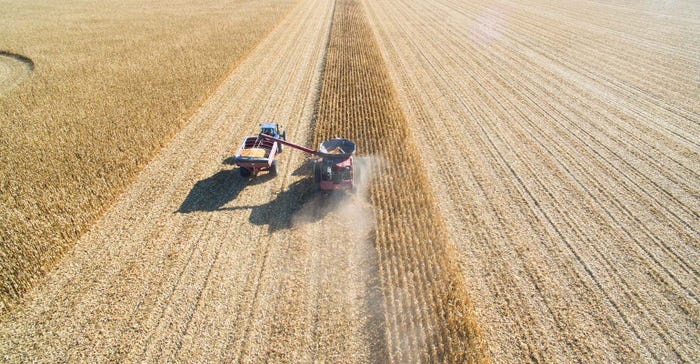
Last Thursday, USDA revised corn yield estimates up nearly 2 bushels, to a robust 171.8 bpa. Now if farmers could only get the crop harvested.
Several rounds of wet weather over the past two weeks have kept harvest progress slow. The latest USDA Crop Progress report, issued Oct. 16, indicates just 28% of the corn crop is harvested – 6% better than a week ago, but well behind the five-year average of 47%.
Some major grain-producing states have harvested less than 20% of their crop, including Iowa (13%), Michigan (19%), Minnesota (7%), North Dakota (8%), South Dakota (12%) and Wisconsin (9%). Meantime, some southern states are wrapping up their 2017 corn harvests, with North Carolina (92%) and Tennessee (91%) leading the way.
And for a second consecutive week, USDA upwardly revised its quality assessment of the corn crop, raising the percent rated good to excellent from 64% to 65%. Meantime, only 11% of the crop is rated poor to very poor.
Ahead of the report, a group of 11 industry analysts predicted corn harvest had progressed to 32% complete, with an estimated range of 28% to 35%. The group of analysts also estimated corn’s “good to excellent” rating would remain unchanged at 64%. Farm Futures estimated corn harvest progress at 32% complete with a G/E rating of 64%.
“Corn yield potential improved last week with only two states seeing a decline – Illinois and Nebraska,” according to Farm Futures senior grain market analyst Bryce Knorr. “Our yield estimates based on ratings improved nearly a full bushel per acre, with the range from 167.4 bpa to 169.6 bpa. Corn harvest remains well below average above the Mason-Dixon line, with many states lagging the five-year average by double digits. States in the northwest part of the growing region remain the most behind.”
Soybean harvest neared the halfway mark, jumping ahead from 36% complete last week to 49% this week. That still keeps it well behind 2016’s pace of 59% and the five-year average of 60%. Every state is at least one-quarter complete at this point, with several southern states near the finish line.
The percentage of soybeans in good-to-excellent remained steady from a week ago, at 61%. However, the distribution shifted slightly, with excellent-rated soybeans up 1% to 13% of the U.S. crop, and good-rated soybeans down 1% to 48% of the U.S. crop. States with the highest levels of excellent-rated soybeans include Tennessee (33%), Minnesota (27%), Wisconsin (26%), Illinois (19%) and Arkansas (18%).
Ahead of the report, a group of 11 analysts estimated the U.S. soybean harvest had advanced to 49% complete, and gauged the quality of the 2017 crop at 61% rated good to excellent. Farm Futures estimated 53% soybean harvest progress and a 61% G/E rating.
“Soybean yield potential was slightly higher this week, gaining less than one-tenth of a bushel per acre,” Knorr said. “Our estimates based on the ratings range from 47.5 bpa to 48.6 bpa. Harvest is behind in most of the western states.”
Winter wheat planting has reached 60% complete, up from 48% a week ago, but behind 2016’s pace of 70% and a five-year average of 71%. Analysts had estimated winter wheat planting progress reached 63%, with estimates that ranged between 60% and 69%.
“Hard red winter wheat seeding remains slow over most of the Plains, especially in the key state of Kansas,” Knorr said. “However, slow planting statistically is correlated with above average yields in Kansas because delays normally occur when fields are wet, which in the long run is a benefit to the crop.”
About the Author(s)
You May Also Like






